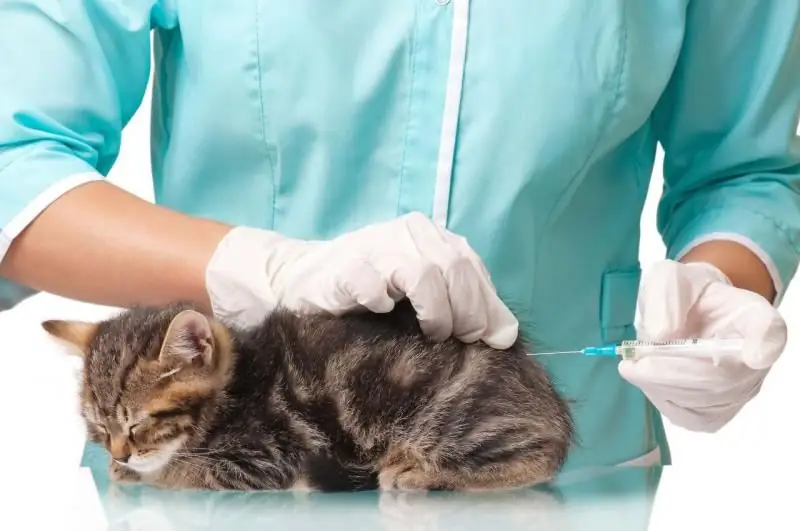
Table of contents:
- Author Bailey Albertson [email protected].
- Public 2023-12-17 12:53.
- Last modified 2025-01-23 12:41.
10 familiar plants in the country that are dangerous for humans and animals

Often, gardeners are carried away by the beauty of the plant and forget about its toxic properties. Many cultures familiar to us are fraught with a serious danger not only for humans, but also for animals.
Clematis

All parts of clematis are poisonous, but its roots are the most dangerous. The plant contains cardiac glycosides, anemonol, saponins and alkaloids.
Clematis juice, which contains caustic substances, causes redness and itching of the skin, blistering. Anemonol irritates the mucous membranes, provoking sneezing and lacrimation.
It is recommended to wear gloves when working with the plant and make sure that its juice does not get on the skin.
Snowdrop

Official medicine recognizes the snowdrop as a medicinal plant, while folk medicine refused to use it. All parts of the culture are toxic. It is prohibited to use it in teas and gatherings.
However, flower bulbs containing galantamine and lycorin are used in the medical industry. The drugs produced are extremely poisonous and sold by prescription.
The ingestion of any part of the snowdrop into the body causes nausea, vomiting, dizziness and bradycardia.
Narcissus

All parts of the narcissus are toxic and contain triterpenes, flavonoids, lycorin and galantamine alkaloids. The bulbs of the plant are especially dangerous. The lycorin contained in them directly affects the brain and causes a paralyzing and intoxicating effect, which can be accompanied by vomiting and diarrhea.
Due to its strong toxicity, the flower repels pests. In official medicine, the plant is not used, but is actively used in folk medicine. For children, pregnant and lactating women, drugs based on narcissus are contraindicated.
Hyacinth

The bulbs contain a large amount of oxalic acid and, once ingested, cause severe poisoning, accompanied by diarrhea and vomiting.
The essential oils secreted by hyacinth during flowering provoke migraines, inflammation and swelling of the mucous membranes, runny nose, itching and the appearance of a red rash all over the body. If, when moving away from the flower, the symptoms persist, Quincke's edema and the onset of anaphylactic shock, which can be fatal, are possible.
Sosnovsky's hogweed

Sosnovsky's hogweed, mistaken for a harmless weed, is a huge danger. Its juice contains a colossal amount of furanocoumarins. When it gets on the skin, it causes poorly healing and painful chemical burns.
The first days of the wound may not manifest itself in any way, but under the influence of UV rays, the furanocoumarins are activated, and redness and blisters appear on the skin. Serious injuries can lead to hospitalization or even death of the victim. After contact with the plant, rinse the skin with water and avoid sun exposure for 2-3 days.
If it gets into the eyes, hogweed juice burns the cornea of the eye and can lead to blindness. Plant pollen at high concentration provokes edema of the larynx, respiratory tract and upper esophagus.
Fraxinella

Ash is a beautiful but extremely toxic plant. Touching any part of it, you can get a serious burn, which will appear only after a day.
The roots of wild star anise contain the alkaloids trigonelline, dictamnine, skimmianin. Aboveground part - choline, saponins and phototoxic essential oils containing methylchavicol and anethole.
The plant is most dangerous in hot weather. On rainy and windy days, the intensity of the release of essential oils decreases, but contact with the ash tree is still dangerous.
The plant should not be sniffed or touched with bare hands. If contact does occur, wash your hands with soap and water, and treat the damaged area with panthenol.
Lily of the valley

All parts of the lily of the valley are toxic, but the most poisonous are its fruits, which retain toxic properties even after heat treatment. The plant contains konvallatoxin, cardioglycosides and saponins.
Any part of the lily of the valley getting into the body causes nausea and vomiting, a decrease in pressure, impaired breathing and cardiac activity. The skin becomes pale, cramps, abdominal pain and muscle weakness appear. Blurred consciousness and hallucinations are possible.
Long-term use of lily of the valley drugs develops a chronic form of intoxication with less severe symptoms. Exceeding the therapeutic dosage by five or more times can be fatal.
Sagebrush

Wormwood is a herbal medicine containing tauracin and thujone. All parts of it are poisonous and retain toxic qualities after years of storage. An increased dose and prolonged use of medicines containing wormwood, contribute to the intoxication of the body and cause severe allergies.
Symptoms of poisoning may include nausea and vomiting, dizziness, general weakness or increased excitability, convulsions and hallucinations.
Uncontrolled intake of drugs with this plant causes a number of disorders in the work of many human organs.
Digitalis

Foxglove (digitalis) contains glycosides, lanatosides and digitoxin, which have a local irritant effect and can disrupt the work of the heart.
All parts of the plant are poisonous, but its leaves are especially dangerous. The concentration of poisons depends on the weather and where the foxglove grows.
Once in the body, digitalis causes vomiting, diarrhea, disturbances in the heartbeat and vision, a drop in pulse, the appearance of hallucinations and convulsions. The lethal dose is 2.3 g.
The plant is extremely dangerous for children and pets.
Elder

The dark blue elderberry is often used as an additional ingredient in the preparation of wines, jams and preserves. Abuse of fruits containing cyanogenic glycosides is fraught with poisoning.
A large number of eaten berries can affect the central nervous system, cause severe migraines, diarrhea and vomiting. In case of severe intoxication, the victim may lose consciousness and fall into a coma.
The most dangerous are unripe black elderberries and all parts of the red and herbaceous varieties.
Recommended:
Domestic Cockroaches: How They Look, Reproduce And Grow, Diseases Carried, Harm And Benefit To Humans + Photos And Videos

Domestic cockroaches are uninvited neighbors. Knowing how they look and how they reproduce is important in order to effectively deal with them
How To Get Rid Of Centipedes In A Private House Or In An Apartment, The Reasons For The Appearance Of Centipedes, Are They Dangerous To Humans

The article contains information on the types of millipedes and how to deal with them. How to get rid of centipedes in an apartment and a private house on your own
Can Fleas From A Cat Or A Cat Go To A Person, Are Cat Parasites Dangerous, Who And How They Bite, How To Get Rid Of And Prevent

Can fleas pass from a cat to a person? Are feline parasite bites dangerous for humans? What does a flea bite look like? Ways to get rid of fleas. Prevention
Fosprenil For Cats And Cats: Instructions For Use In Kittens And Adult Animals, Contraindications And Side Effects, Price, Reviews

What is Fosprenil used for in cats: composition and release form of Fosprenil; indications for use; contraindications and side effects
How To Wean A Cat And A Cat To Tear Wallpaper And Furniture, Features Of Weaning Kittens And Adult Animals, Useful Tips And Tricks, Reviews

Why does a cat tear wallpaper and furniture? How to prevent damage to property. What to do if you can't wean your cat
